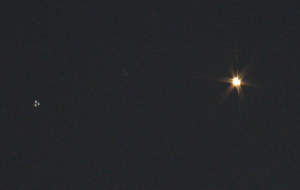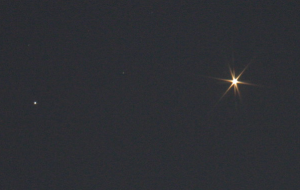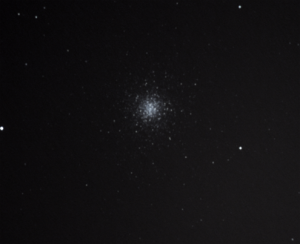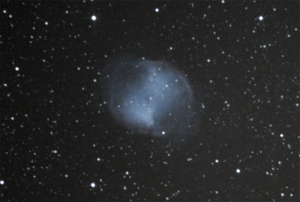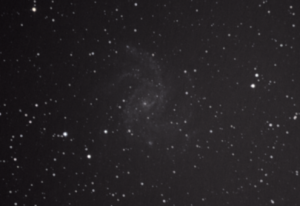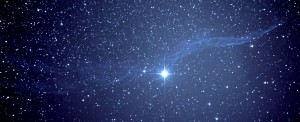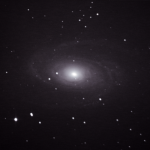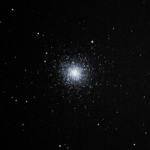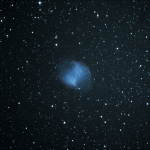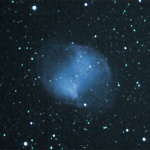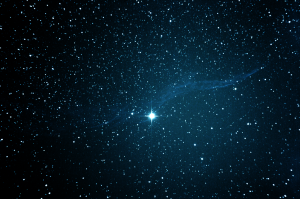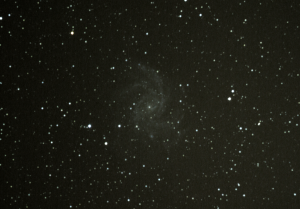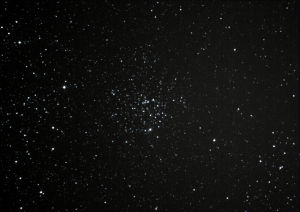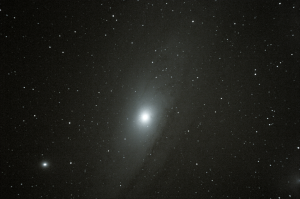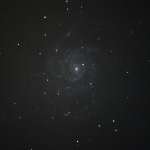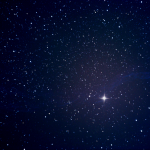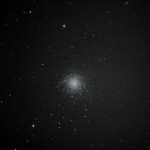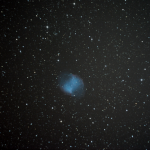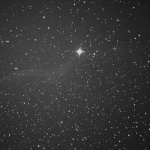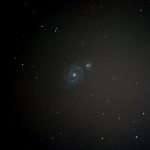I used an unexpected day at home to make a Hartmann Mask to help me focus the Canon 300D DSLR. Using the vanes on the secondary to focus has always been good enough with the Atik Camera and even the web cams before, but the the field of view with the Canon means the spikes on the stars are very small and hard to see if they are perfectly formed or not. After looking at several designs I decided to build the 3 triangle model out of a printer box I had lying around.
Here’s the mask (it’s not really this colour):

The tabs on the side bend over to “hook” over the top of the scope, but in use I had to use some masking tape to hold it in place.
The resulting image when out of focus clearly shows 3 separate images for dimmer stars but shows six large spikes on bright stars like Arcturus here:
When in focus the the 3 images become 1 and the spikes on the bright star become very clear:
The secondary vanes still make spikes so I get an extra 4 to help focusing.
So after focusing the camera (and I think it could do with another tweak), I took a few images before the battery ran out.
I’m disappointed that even with 3 minute exposures NGC6946 is still very faint. With the Atik 16ic this galaxy was brighter using 1 minute exposures – but that’s the difference between a CCD and a CMOS camera I guess.
Next time out I’ll see if I can get the focus even sharper. I’m also trying to work out how to get the 2″ LPR filter I bought into the light-path given that the camera adapter doesn’t have filter threads. I’m so glad I haven’t bought a coma corrector yet as this would screw into the same non-existent threads!
I took a couple of 5 minute frames across the “mexico” of the North American Nebula (NGC7000) but they won’t stack so I can only view the frames individually. I’m sure I have caught some nebulosity and comparing my image with others I can make out some structure, but I think I’d need to take lots of these, on a clear night with good seeing and better focus to make anything worth showing here. Maybe next time.
